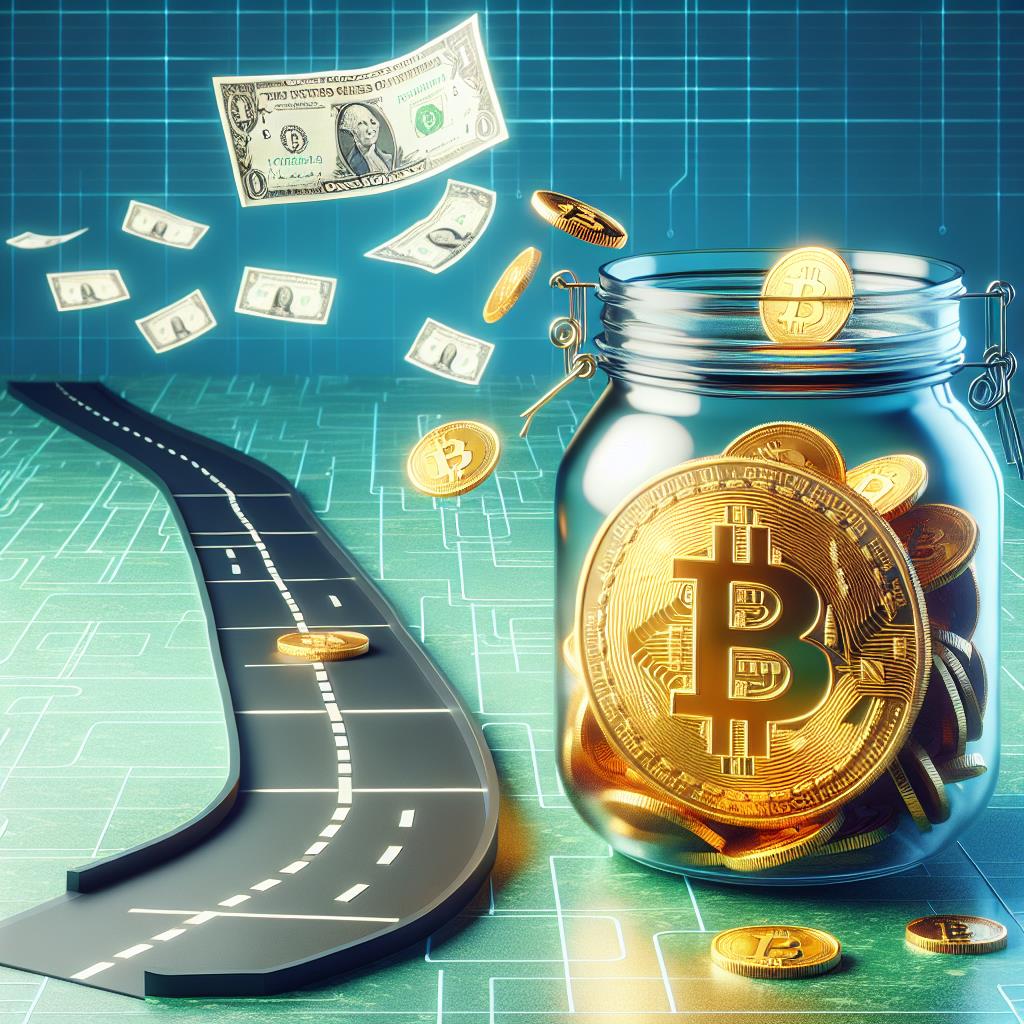
Save In Bitcoin, Spend In Dollars: The Path Toward Hyperbitcoinization?
Save in Bitcoin, Spend in Dollars: Is This The Path Before Hyperbitcoinization?
Lava has introduced an innovative self-custodial Bitcoin borrowing platform. Unlike conventional crypto lending services that hold users' assets (and at times indulge in risky practices like rehypothecation), Lava prioritizes self-custody and employs native bitcoin smart contracts (DLCs) to ensure a secure borrowing environment. The platform features the Lava Vault , which can be accessed via mobile and desktop platforms, acting as a secure self-custodial wallet and borrowing interface. It integrates cutting-edge security measures, including device-specific secure chips for private key management and biometric/two-factor authentication, to keep user funds protected. Lava also provides encrypted backups to reduce the risk of losing funds due to a single point of failure.
An exciting aspect of Lava's Loans product is that it allows users to borrow dollars against their Bitcoin holdings, giving them liquidity without needing to liquidate their Bitcoin . This is especially attractive for Bitcoin HODLers who wish to maintain a long-term stake in BTC 's potential growth while accessing cash for immediate needs. Lava's unique Discreet Log Contract (DLC) technology enables these loans to be provided on a self-custody basis, minimizing the risks associated with counterparty and rehypothecation concerns.
Stablecoin Integration – LavaUSD
Lava has also unveiled its own stablecoin, LavaUSD , designed to merge Bitcoin with dollar-denominated spending. LavaUSD can be redeemed on a 1:1 basis for the US dollar through reserves that are invested in cash and highly liquid instruments. The reserves consist of a blend of short-term US Treasuries, overnight repurchase agreements, and money market funds, all held with partners like BlackRock and Fidelity. With LavaUSD, users can execute payments around the globe seamlessly.
Reasons for its launch include:
- Instant and Global: LavaUSD brings the stability of the US dollar to a worldwide user base while preserving the trustlessness and security offered by modern cryptography. Transactions are instant and can be settled round-the-clock throughout the year, supporting quick on and off-ramps to fiat currencies globally.
- Lower Costs: Being programmable digital dollars makes transactions significantly cheaper and more efficient, thereby eliminating unnecessary fees and hassles typically found in the fiat banking sector.
- Rewards: LavaUSD simplifies the process of distributing yield, points, and other exclusive benefits to its users.
- Security: Lava is capable of providing comprehensive reports to larger institutions to attest to the backing of LavaUSD upon request, which the team notes is often a challenge with other well-known stablecoin issuers. The reserves for Lava's stablecoin are securely held in segregated, bankruptcy-remote accounts with regulated financial institutions. This guarantees complete protection of the reserves, distinguishing them from the operating funds of Lava the company, the issuer, or its custodians. Even in the rare event of bankruptcy, these reserves would still be accessible and safeguarded to ensure all issued stablecoins are fully backed.
- Cross-Chain Swaps: The platform supports stablecoins on various networks (not limited to Bitcoin ), utilizing atomic swaps to ensure borrowers get stablecoins while lenders secure Bitcoin collateral. Over time, Lava intends to broaden support for multiple networks, which could include Bitcoin -based stablecoin alternatives as they develop.
The team has successfully garnered substantial investment, raising $30 million since its inception from notable investors like Khosla Ventures, Founders Fund, and Susquehanna International Group, with early backing from institutions like the Qatar Investment Authority, Google, and Franklin Templeton. In December 2024, it completed a $10 million Series A funding round co-led by Khosla Ventures and Founders Fund, with influential investors such as Keith Rabois and Peter Thiel participating. Recently, Lava secured an additional $30 million in a Series A financing round with contributions from the Qatar Investment Authority and Bijan Tehrani. FULL DISCLOSURE: UTXO participated in Lava's seed funding.
The Argument for Spending Bitcoin vs. Spending Dollars
Recently, a tweet by Caitlin Long , supported by our favorite Bitcoiner in Congress Cynthia Lummis , sparked considerable debate among the Bitcoin community. Many Bitcoiners expressed strong objections to the idea of perpetuating the fiat currency system when transactions could be conducted directly using Bitcoin , as initially envisioned by Satoshi.

(Special thanks to our Bitcoin Magazine OG Mike Germano and PubKey expert Thomas Pacchia for the generous beer – wine is better!)
Using BTC directly for purchases with merchants or individuals is often championed as a significant step toward Hyperbitcoinization-the theoretical scenario where BTC emerges as the primary global currency. This method enhances Bitcoin 's network effect, promotes wider adoption, and adheres to its peer-to-peer philosophy by eliminating intermediaries such as banks. However, this tactic encounters notable challenges. Firstly, BTC retains considerable potential for price appreciation. Historical trends reveal that BTC 's value has escalated from almost nothing in 2009 to surpassing $100,000 by early 2025, fueled by its limited supply (capped at 21 million coins) and increasing institutional interest (e.g., MicroStrategy's treasury strategy). Spending BTC today risks sacrificing future gains, particularly as Bitcoin halvings and market forces continue to limit supply amid rising demand.
Next, tax regulations in various jurisdictions, especially in the United States, create burdensome obstacles for spending BTC . Within the U.S., the IRS classifies BTC as property, meaning each transaction is seen as a taxable event. When BTC is sold or spent at a profit, capital gains taxes can reach up to 37% for short-term gains and 20% for long-term holdings, calculated based on the difference between the purchase price and the sale price. This complexity discourages users from spending directly, as they must monitor their cost basis, report gains meticulously, and deal with administrative overhead, which often outweighs the convenience of utilizing BTC . For instance, spending $1,000 worth of BTC that appreciates to $10,000 would incur a tax liability of approximately $2,800 (assuming a 28% effective rate), which makes spending via stablecoins a more fiscally attractive option.
Why Holding Bitcoin is Preferable Over Spending Now
Considering BTC 's upward trajectory, spending it presently may compromise long-term wealth retention. Analysts predict that BTC could potentially reach $200,000 or more by 2030 if prevailing trends continue, driven primarily by its function as an inflation hedge and a weakening fiat system. Spending BTC at the current market price effectively locks in value at a fraction of its potential, particularly when alternatives such as Lava's lending model offer liquidity without the need for liquidation. Furthermore, the tax implications intensify this disincentive, as frequent transactions diminish net returns. This aligns with the“HODL” philosophy, which advocates for holding BTC to maximize appreciation, while meeting immediate financial needs through borrowed dollars or stablecoins.
Mitigation Strategy: Buy-Back Mechanism
To reconcile the desire to spend with the imperative to hold BTC , a buy-back strategy can provide a practical solution. After securing dollars against BTC through Lava's platform, users can utilize these funds while pledging to repurchase BTC later when market circumstances or personal finances are favorable. This tactic capitalizes on Lava's self-custodial lending (with a competitive 7.5% interest rate) to secure liquidity while preserving the initial BTC holdings. The repurchase can be strategically timed to take advantage of market dips or post-tax season liquidity, potentially allowing for lower-priced acquisitions, thereby enhancing total holdings. For instance, borrowing $10,000 against 0.1 BTC (valued at $100,000) facilitates spending, while allowing for a buy-back of 0.09 BTC at $90,000 down the line, resulting in a profit if BTC appreciates further. This approach also mitigates tax exposure by postponing sales and aligns with long-term appreciation aspirations.
As the prospect of Hyperbitcoinization approaches, the dilemma between saving in Bitcoin and utilizing dollars exemplifies a critical period in the evolution of BTC . Retaining BTC maximizes its potential for value driven by scarcity while growing adoption; simultaneously, tax complications and market volatility discourage direct spending. The advent of stablecoins and advanced lending models presents a tangible solution, enabling Bitcoin 's long-term value to be preserved while addressing immediate cash needs. Until Bitcoin fully surpasses fiat currency, this interplay-hoarding a transformative asset alongside reliance on traditional currencies-may outline the pathway to a Bitcoin -dominated world, actively shaped by forward-thinking Bitcoin enterprises!
Articles penned by Guillaume may address topics or entities that are part of his firm's investment portfolio (UTXO Management ). The viewpoints expressed are entirely his own and do not reflect the perspectives of his employer or its affiliates. He does not receive any financial compensation for these insights. Readers are encouraged to conduct their own research prior to making any financial decisions.
This content originally appeared in Save in Bitcoin, Spend in Dollars: Is This The Path Before Hyperbitcoinization? on Bitcoin Magazine , authored by Shinobi .
Crypto Investing Risk WarningCrypto assets are highly volatile. Your capital is at risk.
Don't invest unless you're prepared to lose all the money you invest.
This is a high-risk investment, and you should not expect to be protected if something goes wrong.
Legal Disclaimer:
MENAFN provides the information “as is” without warranty of any kind. We do not accept any responsibility or liability for the accuracy, content, images, videos, licenses, completeness, legality, or reliability of the information contained in this article. If you have any complaints or copyright issues related to this article, kindly contact the provider above.






















Comments
No comment